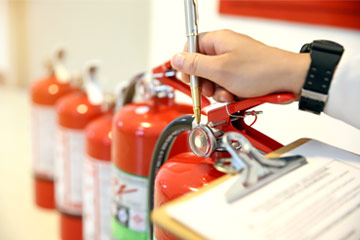Each July, fire safety and concerns regarding explosions are top of mind as Independence Day celebrations take place. At Case School of Engineering, a group of students and researchers study these issues year round in a unique format: a graduate degree track in fire science and engineering.
The program took root in 2011 when Underwriter Laboratories, a safety certification company, approached the university to collaborate on advancing fire-related education and research. Now, Case Western Reserve students have the opportunity to pursue one of two tracks in the 27-credit, one-year program: mechanical engineering or macromolecular science and engineering. The degree program is directed by Fumiaki Takahashi.
Throughout the program’s courses, faculty aim to teach students about combustion and fire suppression, preparing them for careers in settings such as fire departments, governments, insurance companies, standards-setting organizations and beyond.
“Universities having such programs in the nation is extremely rare,” said consortium Hatsuo Ishida, noting the competitive advantage the program gives students when they go on to seek employment in the field. “The characterization of very complex flaming systems will train students with multi-faceted analytical capability.”
While the program only attracted four students when it formally launched in 2014, it’s now welcomed more than 35 PhD students, master’s students, undergraduates and even high school students who collaborate with nearly 20 faculty members who lead the program’s research efforts.
Thanks to having this master’s degree track in fire science and engineering, Case Western Reserve has emerged a leader in the field, sparking breakthroughs in green technology for flame retardation, creating a consortium of scholars involved in fire-related research, and even hosting two symposiums.

